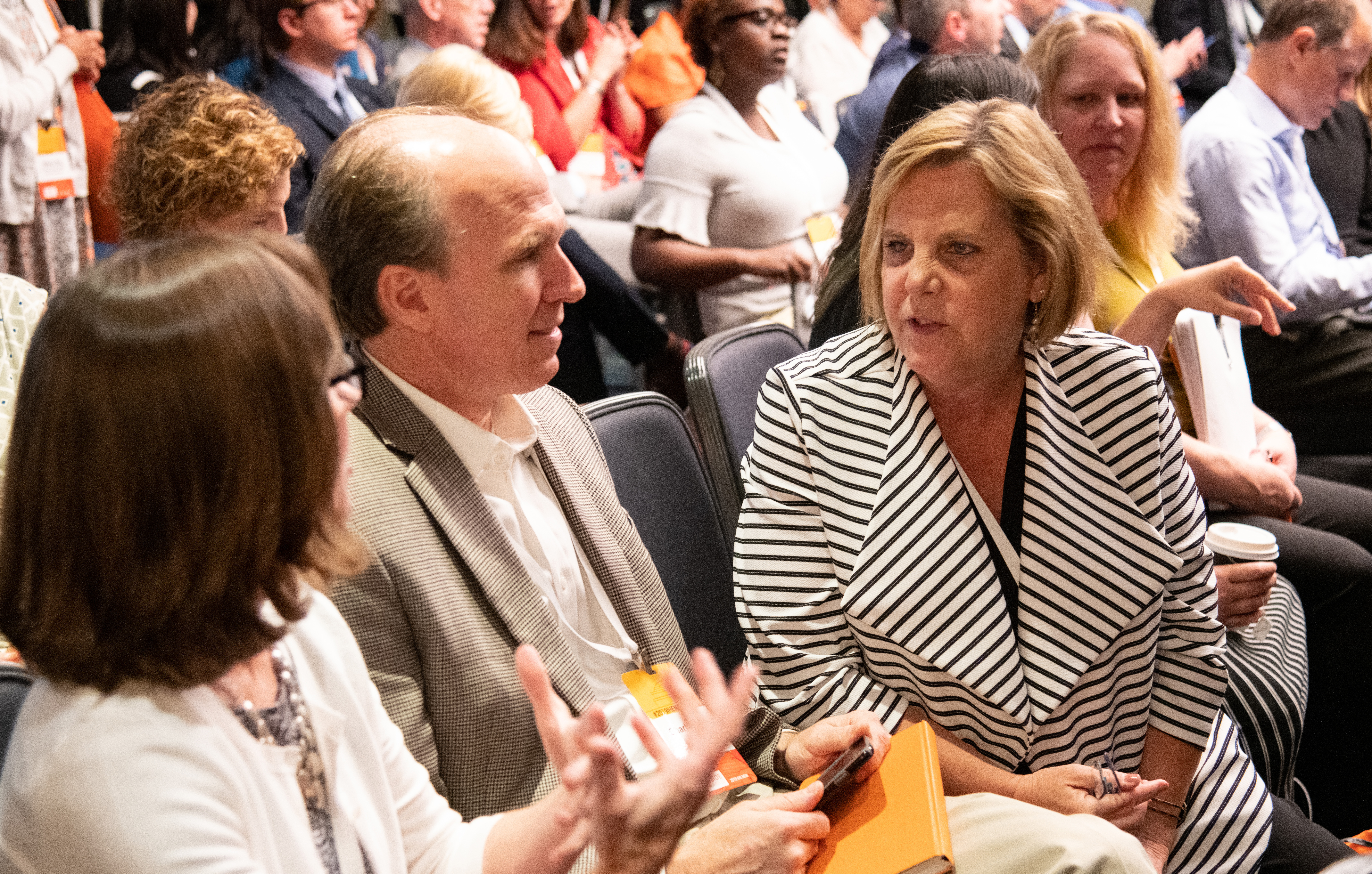More than 350 higher education professionals from across the country converged on Baltimore for “The Future of Public Higher Ed” Conference from July 8-10, 2019.

Attendees at the conference held in Baltimore from July 8-10, 2019, discuss the future of public higher education.
The three-day summit at the Renaissance Baltimore Harborplace Hotel drew higher education professionals from research universities, regional public universities, and community colleges as well as experts from every sector of public education to Baltimore to discuss some of the most pressing issues facing higher education.
The event was organized by Washington, D.C.-based Inside Higher Ed and co-sponsored in part by the University of Maryland, Baltimore, the University of Maryland Baltimore County, and the University of Maryland Global Campus. Mark Belles, publisher and chief operating officer of Inside Higher Ed, said the conference's goal was for attendees to gain a greater perspective about what is happening in higher education across the country and for attendees to “solve some of the challenges and deal with some of the opportunities” of education.
Over the course of three days, panelists and attendees engaged in candid conversations about the thorny issues of higher education during breakout sessions on topics such as “Attracting Students in a Crowded Market: How Community Colleges are Reversing Enrollment Declines and Growing Their Numbers,” “Rural Community Colleges: Why They Matter and Why They are Endangered,” and “More than a Degree: Preparing Students for Careers.”
During the latter panel, UMB President Jay A. Perman, MD remarked that while UMB’s professional schools prepare students for degrees in law, medicine, pharmacy, nursing, dentistry, and social work, there’s also an emphasis on reaching out beyond the classroom into the surrounding West Baltimore community. “We teach teamwork and cultural competency that gives the student exposure to the expectation that they have community service to do within their professions,” he said.
Perman was joined on the panel by Neville G. Pinto, PhD, president of the University of Cincinnati (UC), and Ruth V. Watkins, PhD, president of the University of Utah. Moderated by Inside Higher Ed reporter Rick Seltzer, the panel explored the unique challenges and opportunities each institution faces as they prepare students to walk off the stage with a diploma and into the workforce.
Watkins noted that a large focus of the University of Utah is centered on meeting workforce need in a rapidly growing and vibrant economy. Salt Lake City and the surrounding metropolitan area — dubbed Silicon Slopes in a nod to an influx of tech companies — has an ever-growing need for an educated workforce. While it’s a privilege to be part of such growth, she says, “It puts enormous pressure on us as Utah’s flagship university to provide the educated workforce the economy needs to grow.”
UC President Pinto is facing a different challenge, which he described as a “polarization of opportunity” happening in Ohio and across the Midwest. “Cities are doing well,” he said — Cincinnati, Cleveland, Columbus — “the rest of the state is not.”
He wants to bridge that gap with graduates who can fill jobs in the regional economy.
Referring to the 46,000 undergraduate and 11,000 graduate students enrolled at UC, Pinto said developing that workforce is a challenging but exciting task. He added, we have to “use the enormous intellectual capacity when it comes to our doors every year and try to expand it and root it in finding solutions and opportunity for the people in our state.”
Representing the only exclusively graduate-level university on the panel, Perman explained that while UMB’s seven schools turn out more than half of the professional degrees in the state, he also is deeply invested in each school giving back to the surrounding community.
“Baltimore is a distressed city,” he admitted. So whether it's nursing students leading chair yoga for disabled seniors at Hollins House or dental students providing free and reduced fee services to the community, “Our focus on community engagement helps to prepare our professionals to be better and helps our neighbors,” he remarked.
He also noted how UMB is working to close the education gap by reaching out to students as early as sixth grade through the CURE Scholars Program. “We hold onto them for dear life through high school and hopefully ready them for a college and get them excited for a career in health care,” he explained.


